What to do in Greece: 20 must-sees and must-dos
Pierre
06 Sep 2023
Welcome to Greece, a country rich in history, culture and diversity. Greece, the cradle of Western civilization, is revealed between myth and reality. Here, the Acropolis of Athens stands proud, while the azure waters of Santorini bewitch the travelling soul. Between golden beaches, ancient ruins and enchanting islands, this Mediterranean country offers an unrivalled wealth of culture. Mermaid songs, traditional dances and culinary delights take you on a timeless journey. A land where every stone tells a story, every island a paradise.
Your online travel health insurance
Start your quotation now and obtain your medical insurance certificate, which insures medical expenses according to the country’s needs.
Athens, Greece’s historic capital, lies between sea and mountains. Nearby, the Acropolis hill towers majestically over the city, a reminder of its rich past.
Discover its lively districts, sample its gastronomy or stroll through the ancient Agora are just some of the pleasures not to be missed.
The Parthenon and the Acropolis Museum are the jewels in the crown.
Did you know that Athens is one of the oldest cities in the world, with a history spanning more than 3,400 years?
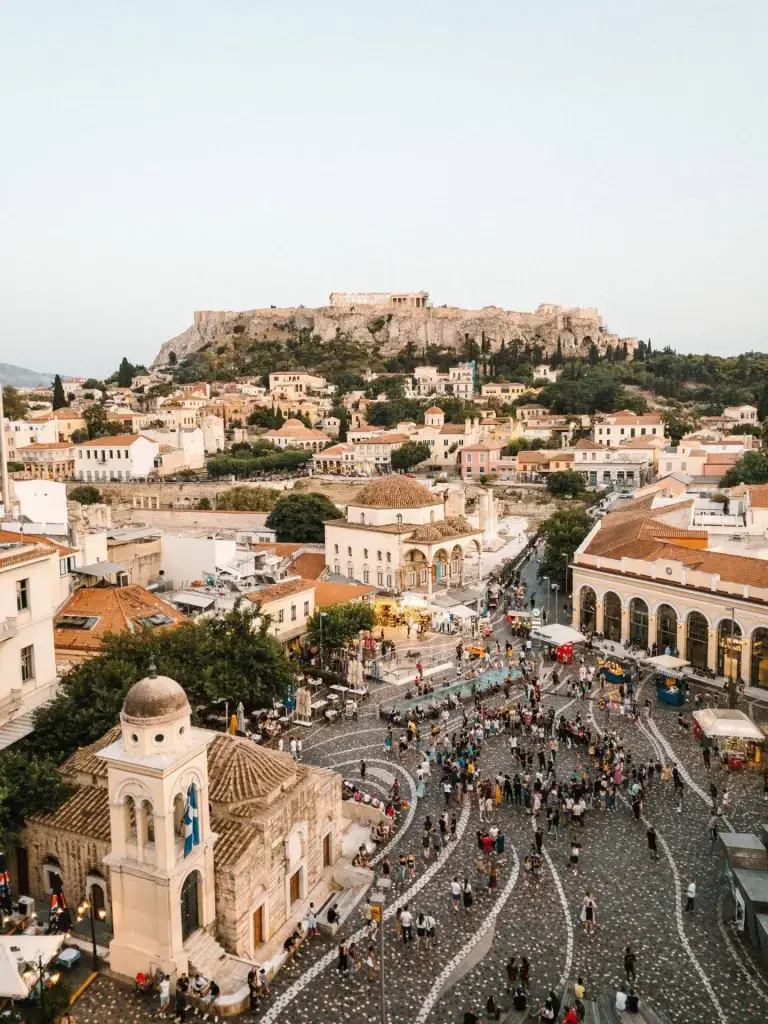
The Acropolis of Athens sits majestically on a rocky hill overlooking the modern city. Around this emblematic monument, the vibrant Greek capital stretches out, with its lively streets and contemporary buildings.
At the summit, architectural gems await visitors: the Parthenon, the Erechtheion, the temple of Athena Nike and the Propylaea.
Up here, you can walk in the footsteps of the ancient Athenians, admire breathtaking panoramas and soak up millennia of history.
Anecdote: the Acropolis is often referred to as the “cradle of Western civilization”, as it represents the apogee of ancient Greek art and culture.
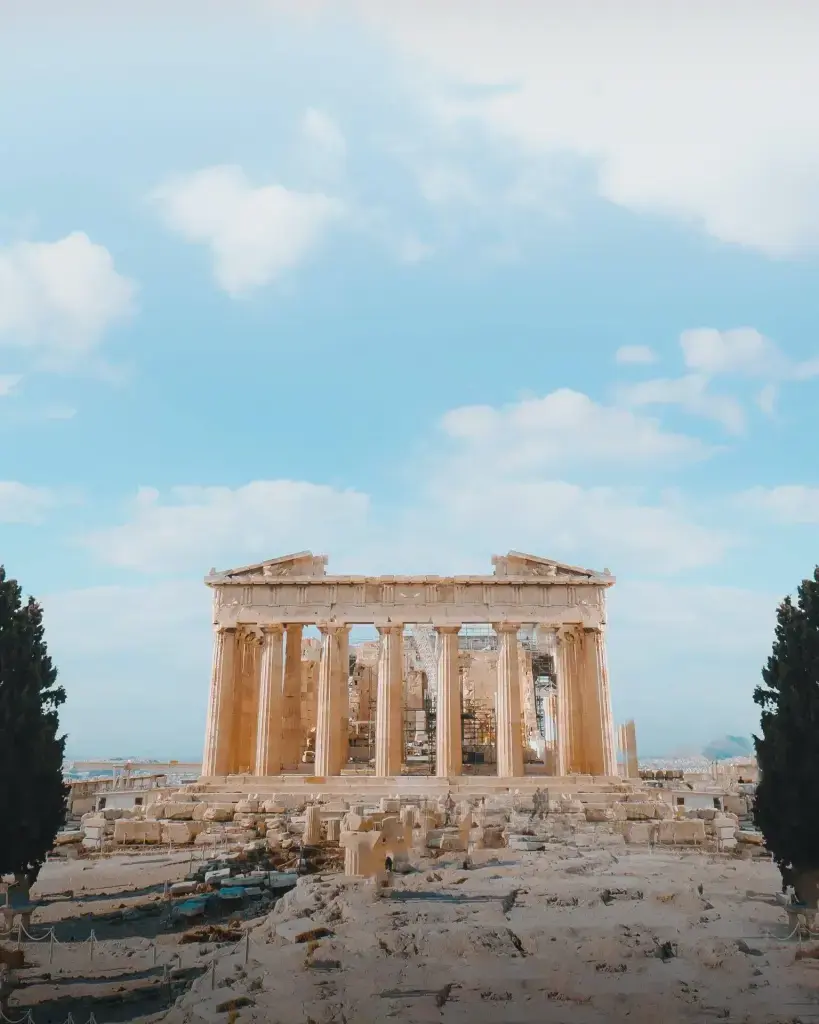
Santorini, nestled in the heart of the Aegean Sea, is an enchanting island formed by a volcanic eruption. From its vertiginous cliffs, you can see the caldera stretching as far as the eye can see, a sight that attracts so many travellers.
Oia and Fira, with their whitewashed houses and blue domes, are musts for any traveler.
Visitors can bask on its unique black or red sand beaches, explore archaeological sites or taste wines produced on the island.
Santorini is said to be the possible location of the legendary Atlantis due to its volcanic history.
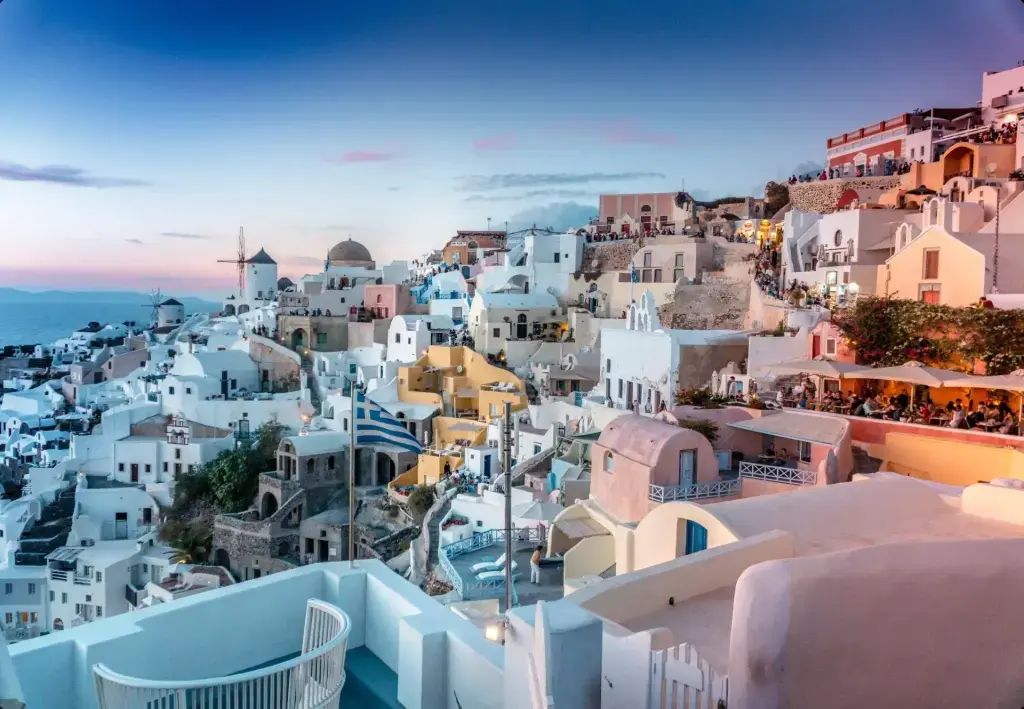
Mykonos, the pearl of the Cyclades, stands proudly in the Aegean Sea. Flanked by crystal-clear waters, it is surrounded by other Greek islands, all equally magnificent.
The Little Venice district and its windmills are unmissable emblems of the island.
Visitors flock here for its golden beaches, wild parties and picturesque alleyways.
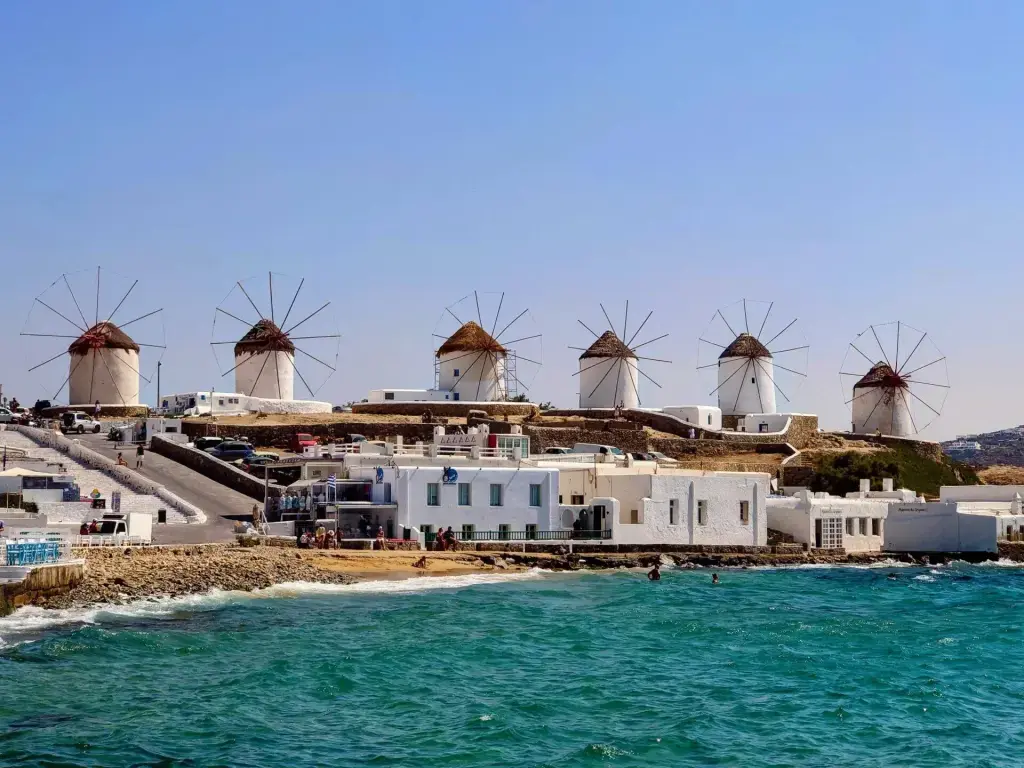
The Temple of Poseidon at Sounion stands proudly on a rocky promontory overlooking the Aegean Sea. Contemplating it, you can see the horizon stretching to infinity, merging sky and sea in an eternal dance.
The majestic Doric columns bear witness to the grandeur of the site.
Here, visitors can soak up the serenity of the surroundings, feel the breath of the god of the sea and admire one of Greece’s most beautiful sunsets.
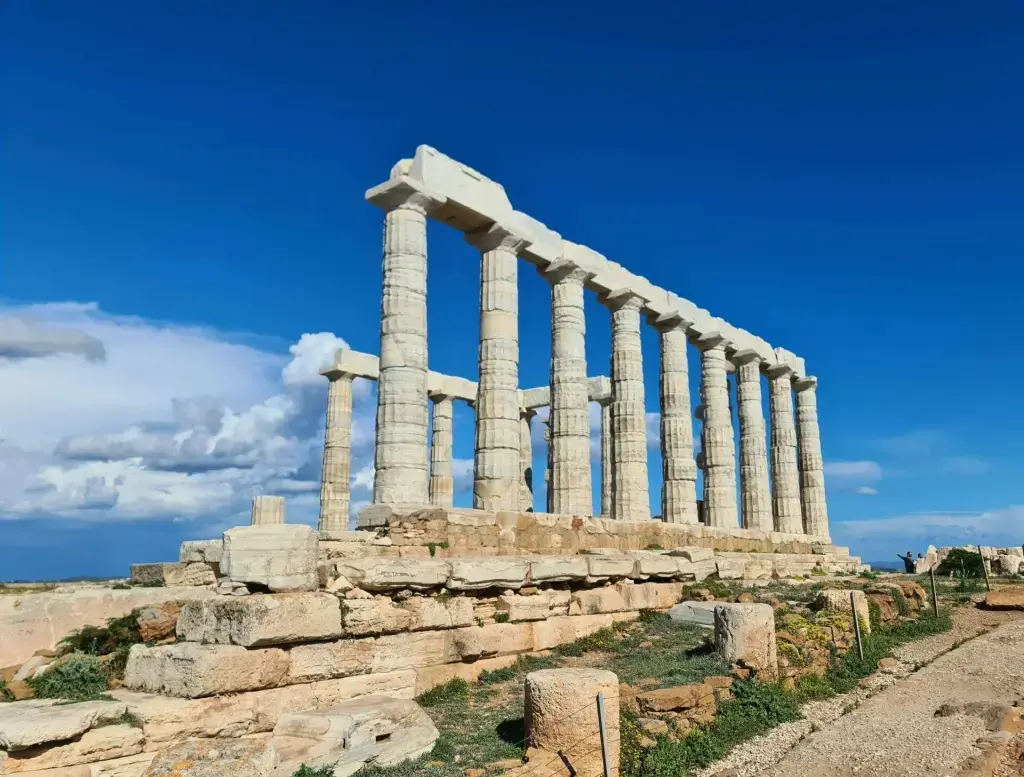
Delphi, nestled on the slopes of Mount Parnassus, is a sacred ancient site. Beyond its majestic ruins, you can admire the green valleys and mountains that surround it.
The Temple of Apollo and the ancient theater are jewels not to be missed. Travellers come here to discover its oracles, walk in the footsteps of ancient pilgrims and soak up the mystical aura of the place.
Delphi was considered by the ancient Greeks to be the navel of the world!
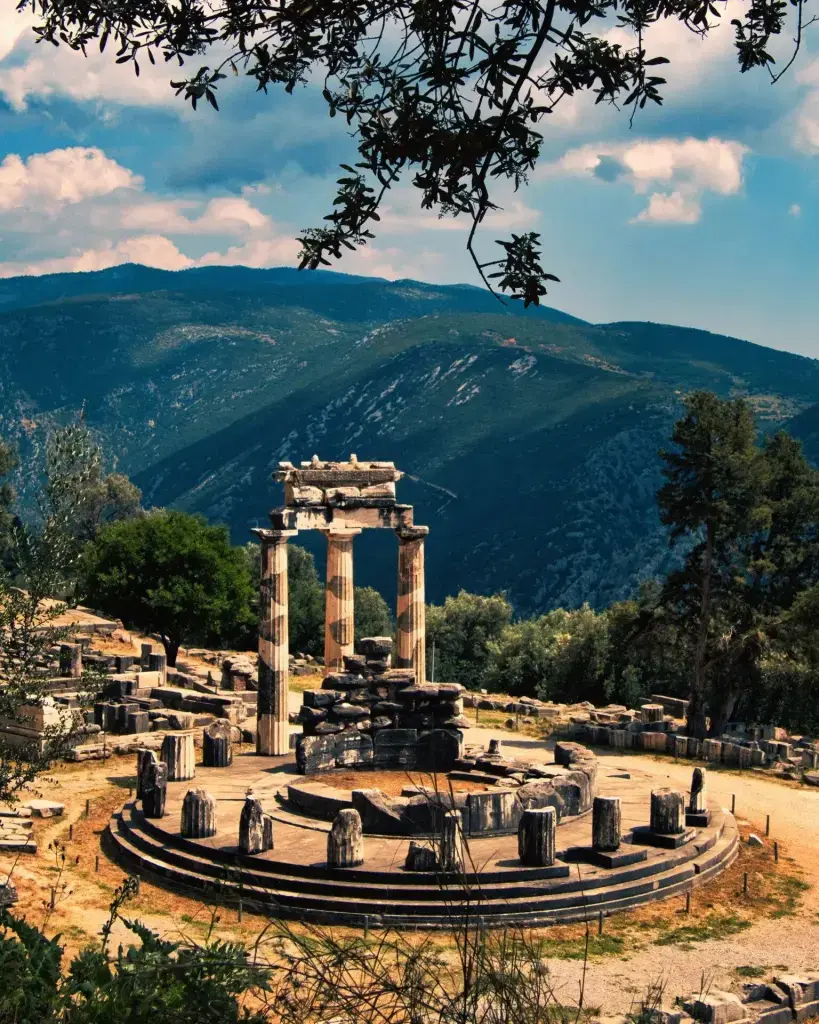
The Palace of Knossos in Crete, a majestic vestige of Minoan civilization, stands in the heart of fertile soil. Nearby olive groves are a reminder of the island’s rich agricultural heritage.
Vivid frescoes and intricate labyrinths are the signature of this palace.
Visitors can explore ancient royal halls, marvel at Minoan ingenuity and imagine the myths of Minos and the Minotaur.
Did you know that Knossos Palace is often associated with the legend of the labyrinth and the fearsome Minotaur?
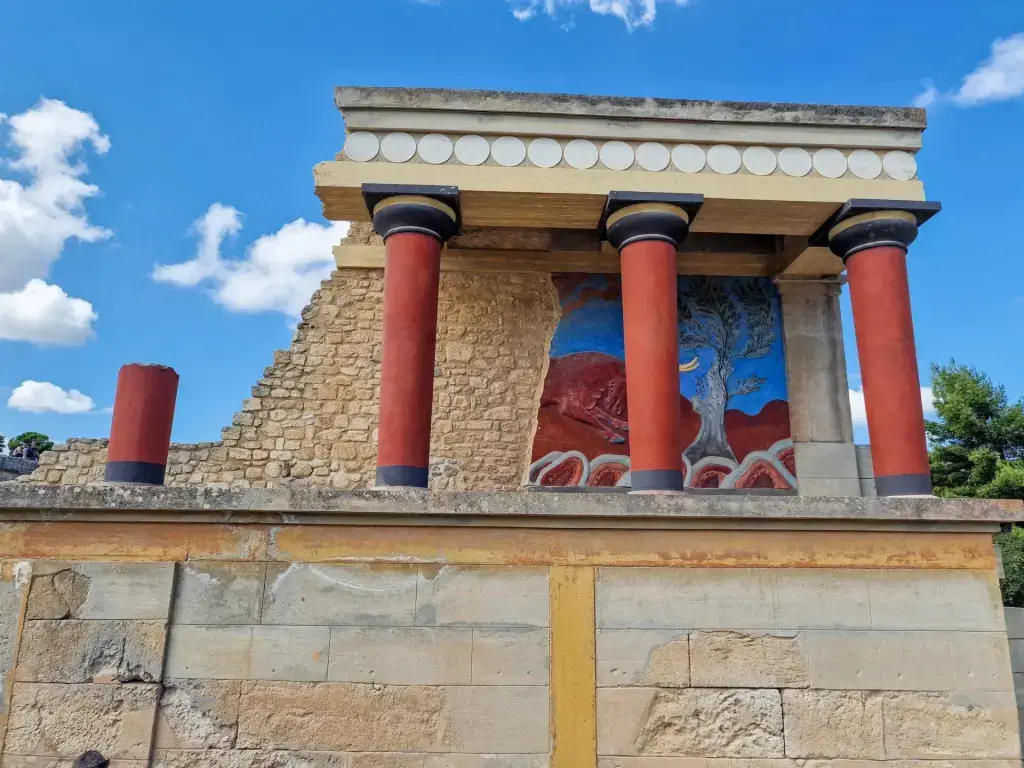
Rhodes, an island in the Dodecanese, stands out like a sparkling gem in the Aegean Sea. A visit reveals a mosaic of civilizations, where each stone tells a story.
The Old Town and the Palace of the Grand Masters are must-sees.
Here, travelers seek out sunny beaches, explore medieval ramparts and dive into clear waters to discover marine life.
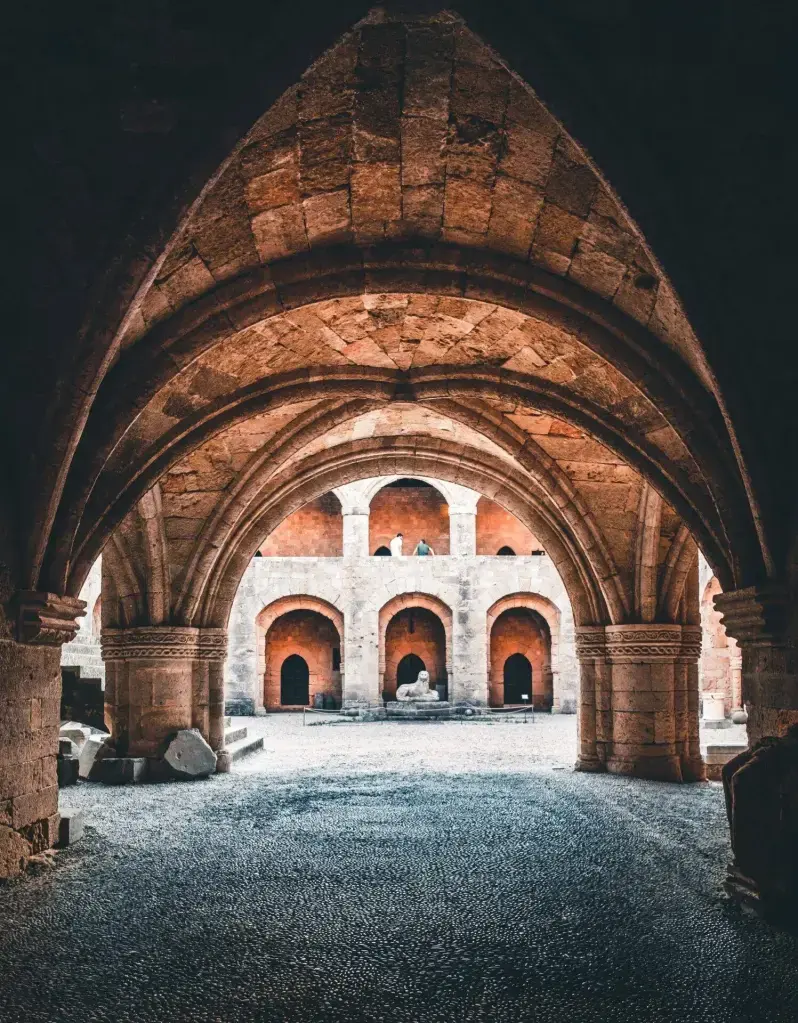
Olympia, a sanctuary of ancient Greece, rests peacefully in the Alpheus valley. Not far away, the wooded mountains of the Peloponnese watch over this mythical site.
The Temple of Zeus and the Olympic stadium stand witness to the events of yesteryear.
The curious come to tread the ground of the first Olympic Games, relive the ancient ceremonies and get a first-hand feel of the history of the athletes of yesteryear.
Note: the Olympic flame is lit in Olympia before each modern Olympic Games, perpetuating an age-old tradition.
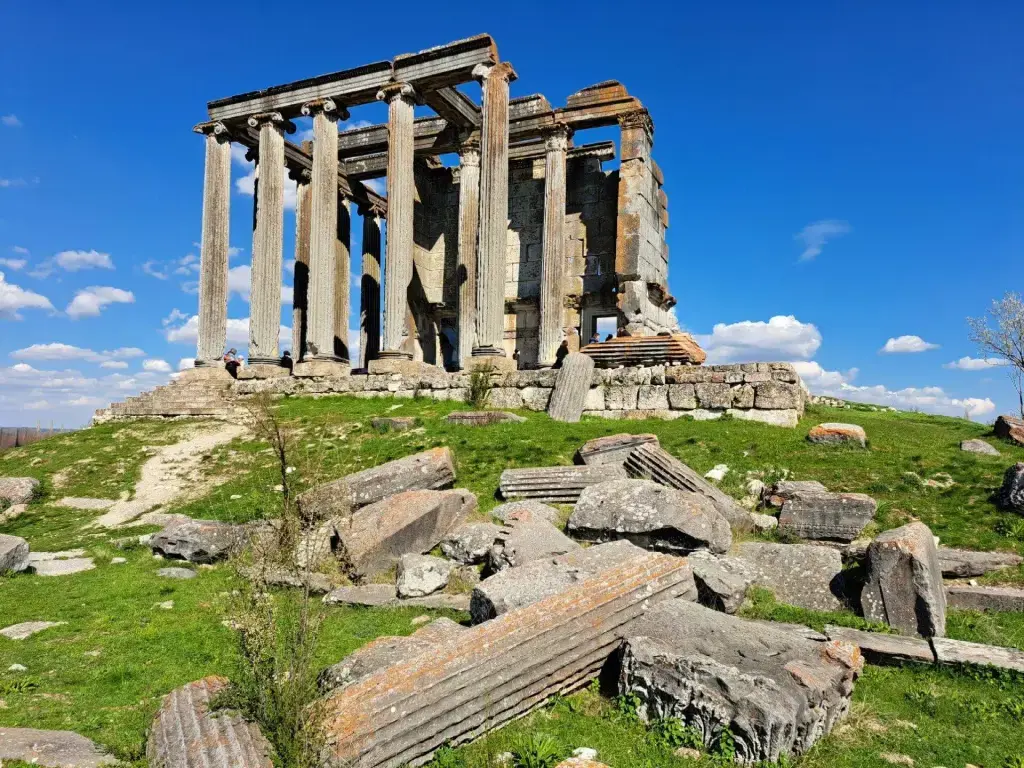
The Monasteries of Meteora, perched on imposing rock columns, seem to float between heaven and earth. All around, the Thessaly mountains stretch out majestically, offering breathtaking panoramic views.
These Byzantine monasteries, accessible via narrow staircases carved into the rock, are the beating heart of the area. Here, visitors can find peace and serenity, admire ancient frescoes and marvel at the architectural audacity of the monk-builders.
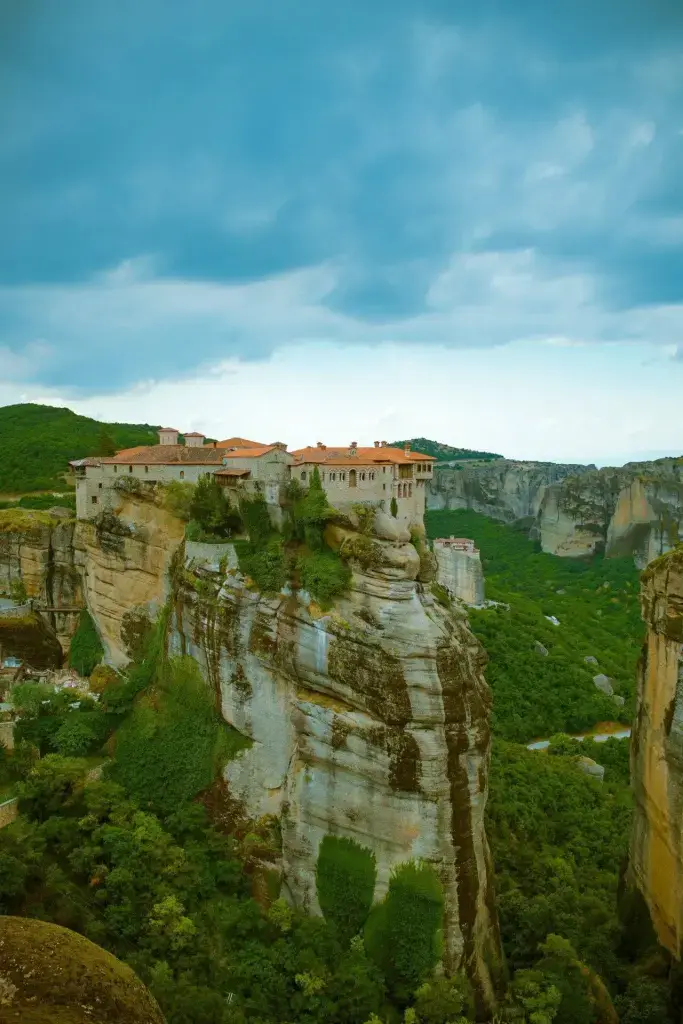
Epidavros, in the Peloponnese, is famous for its perfectly preserved ancient theater. In the surrounding area, centuries-old olive trees intertwine and the mountains add their majestic touch to the landscape.
The theater and the sanctuary of Asclepius are the jewels in the crown. Music lovers appreciate the theater’s exceptional acoustics, while the curious explore the remains of ancient healers.
The Epidavros theater is renowned for its perfect form, allowing 14,000 spectators to hear every word spoken on stage clearly, without amplification!
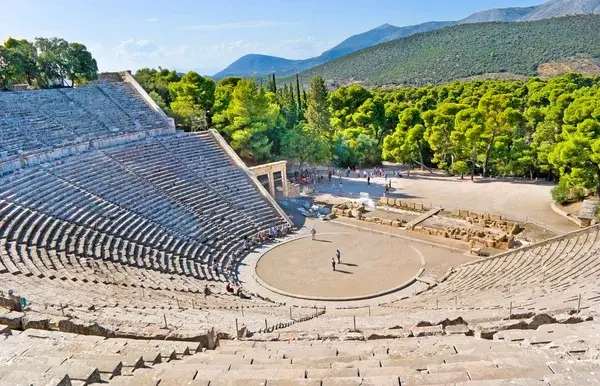
Thessalonica, Greece’s second-largest city, stretches along the Aegean Sea. The White Tower, the city’s emblem, and the Byzantine ramparts overlooking the city.
Churches, the Rotunda and Aristotelous Square are all must-sees. Here, you can stroll through the lively alleyways, savour the local cuisine and dance the night away!
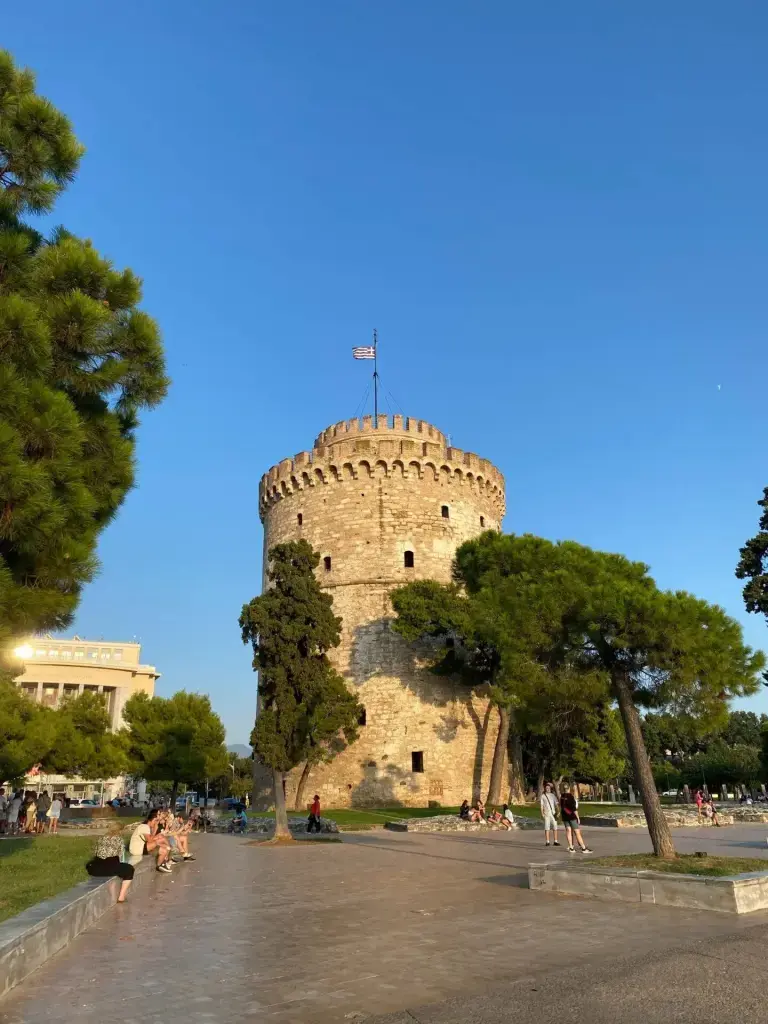
The Ionian Islands, nestled to the west of mainland Greece, offer a spectacle of vivid colors. First, the blue of the sea contrasts with the green mountains covered with olive trees.
Corfu, Zakynthos, Lefkada and Kefalonia are just some of the glittering stars of this archipelago.
You’ll discover magnificent beaches, crystal-clear waters and villages that have retained their charm of yesteryear.
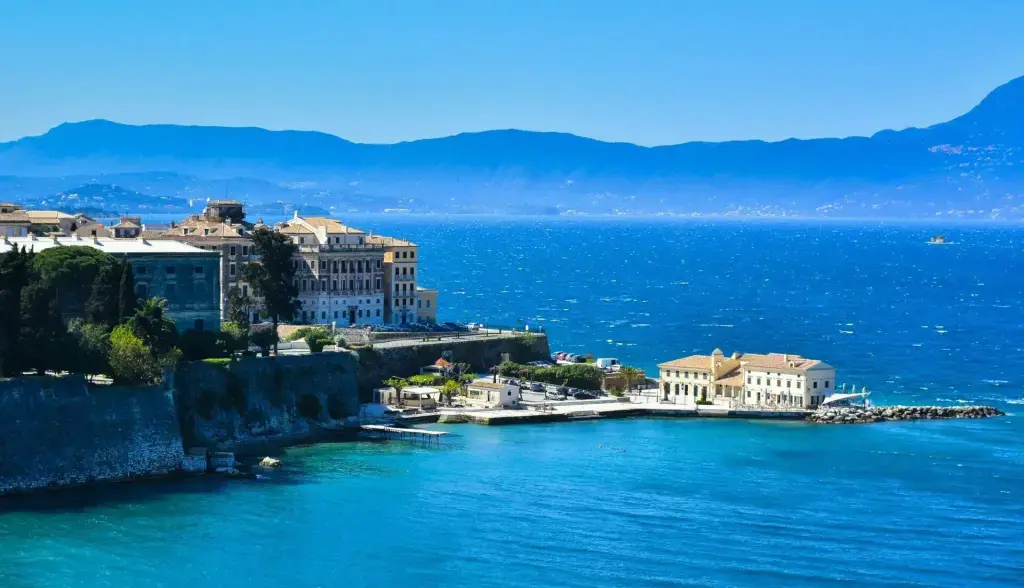
Navagio Beach on Zakynthos, one of the Ionian Islands, is a real hidden gem. Surrounded by steep limestone cliffs, this beach is accessible only by sea. Moreover, the wreck of a boat, like a sentinel of the past, lies here, adding to the mystery of the place.
The wreck, turquoise waters and white sand are the undisputed stars here. This beach is nicknamed “Shipwreck Beach” after the ship that ran aground here in the 1980s. Swimming is a popular activity, but many also come to admire this unique landscape from the high vantage points.
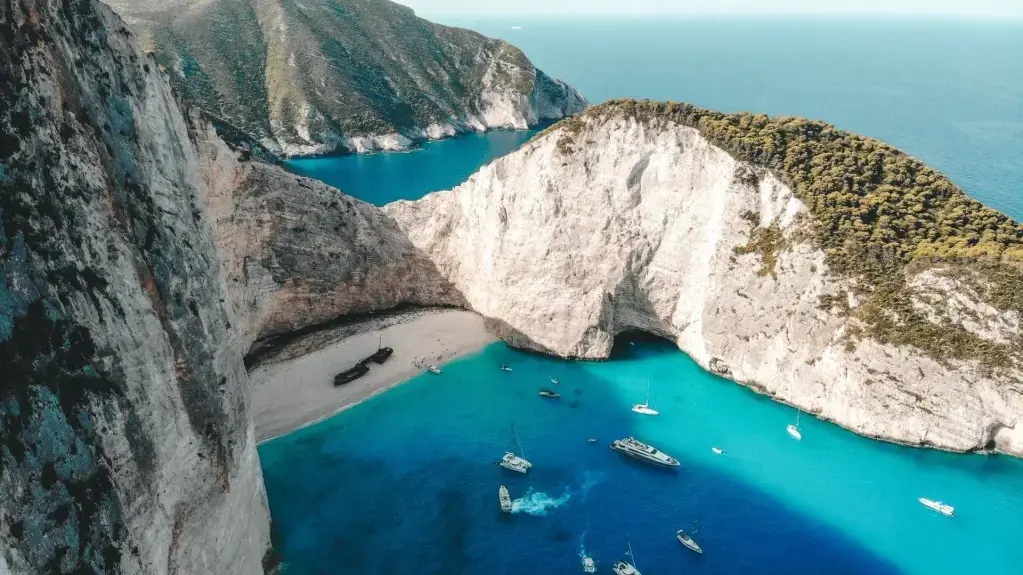
The Temple of Apollo, perched in Corinth, an ancient city of Peloponnesian Greece, bears the scars of time. Its imposing Doric columns, though reduced in number, still dominate the archaeological site, bearing witness to past grandeur.
The monolithic columns, a key feature, reach for the sky.
Visitors stroll through the ruins, imagining the rites and ceremonies that once took place here.
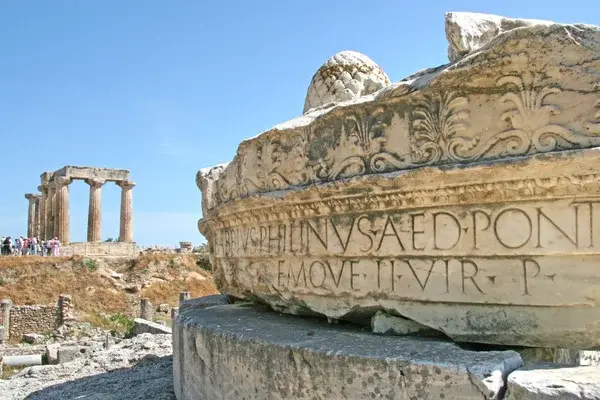
Kefalonia, the largest of the Ionian Islands, reveals itself as a Mediterranean treasure. Firstly, the beaches of Myrtos and Antisamos are azure jewels bordered by rugged coastlines.
The Melissani and Drogarati caves invite you to explore.
Activities abound, from hiking on Mount Ainos to local wine tastings.
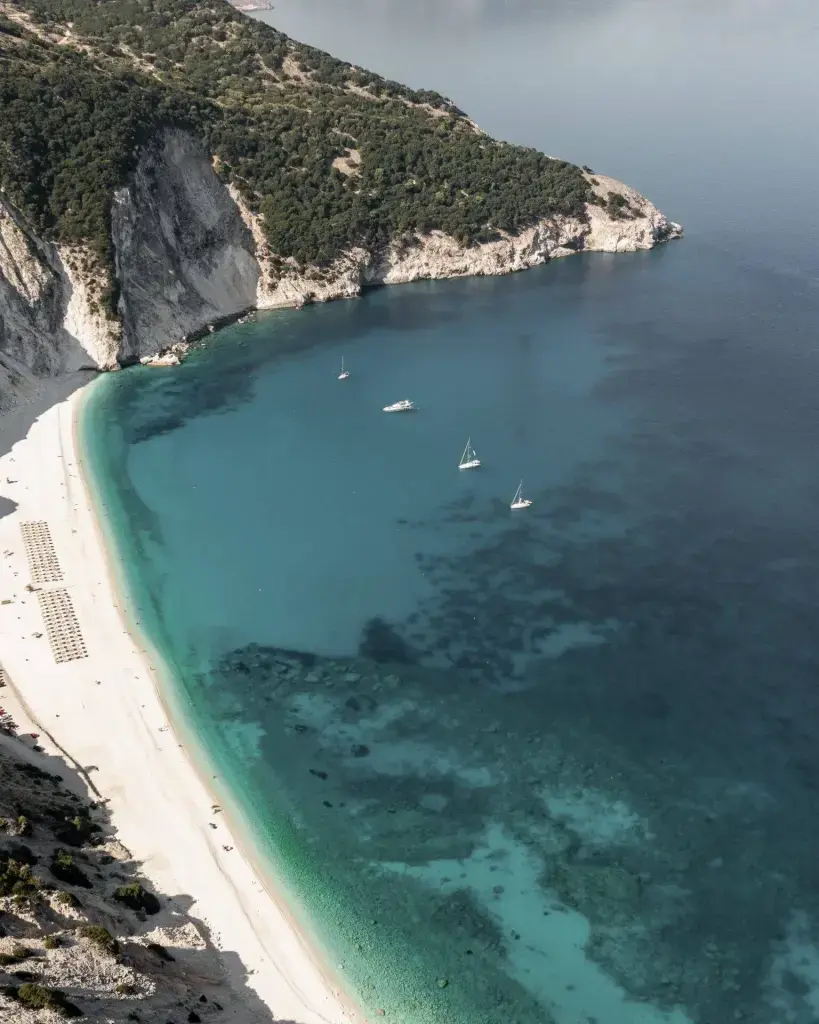
Naxos, in the heart of the Cyclades, is a fascinating mix of golden beaches and majestic mountains. Firstly, its strategic position on the Aegean Sea has made it a crossroads of cultures for centuries.
The Portara, an imposing marble gateway, and the giant kouros bear witness to its rich past.
Activities range from lazing on the beach to exploring traditional villages.
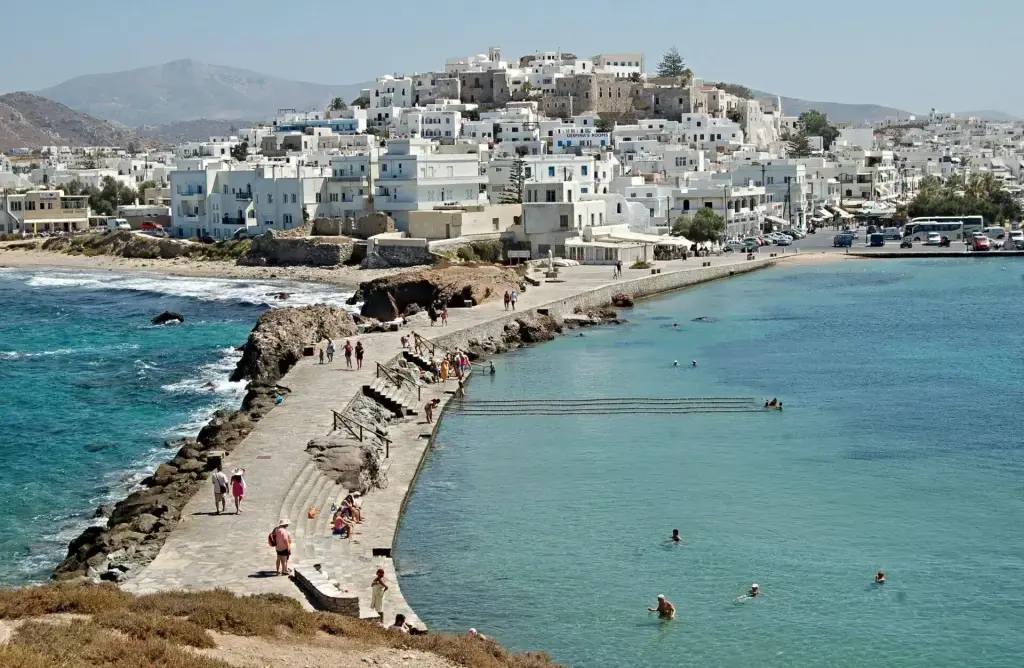
The Parthenon, proudly overlooking the city of Athens from the Acropolis, is an emblem of ancient Greece. Located close to other historic monuments, its silhouette stands out against the Aegean sky.
This temple dedicated to Athena is the pinnacle of Doric architecture. Tourists flock here to admire its sculpted friezes and metopes.
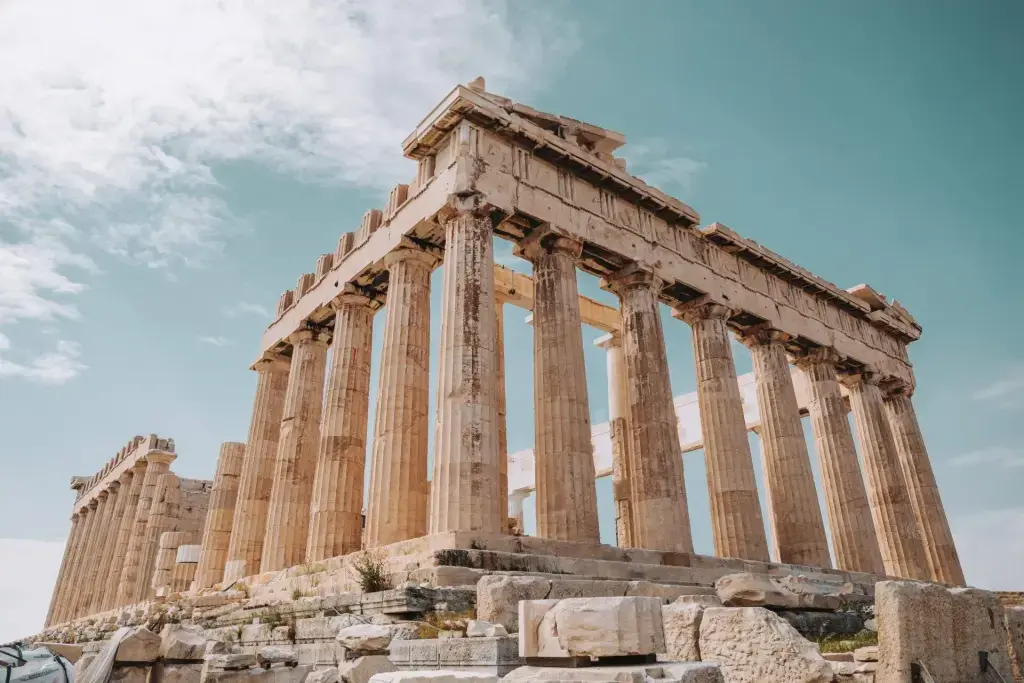
The island of Hydra, nestled in the Saronic Gulf, is distinguished by the absence of motorized vehicles. As soon as you arrive at the port, you’ll be charmed by its peaceful atmosphere and stone buildings.
Mansions and museums rub shoulders with small boutiques and cafés. On foot or by donkey, visitors can explore its narrow streets and secluded beaches.
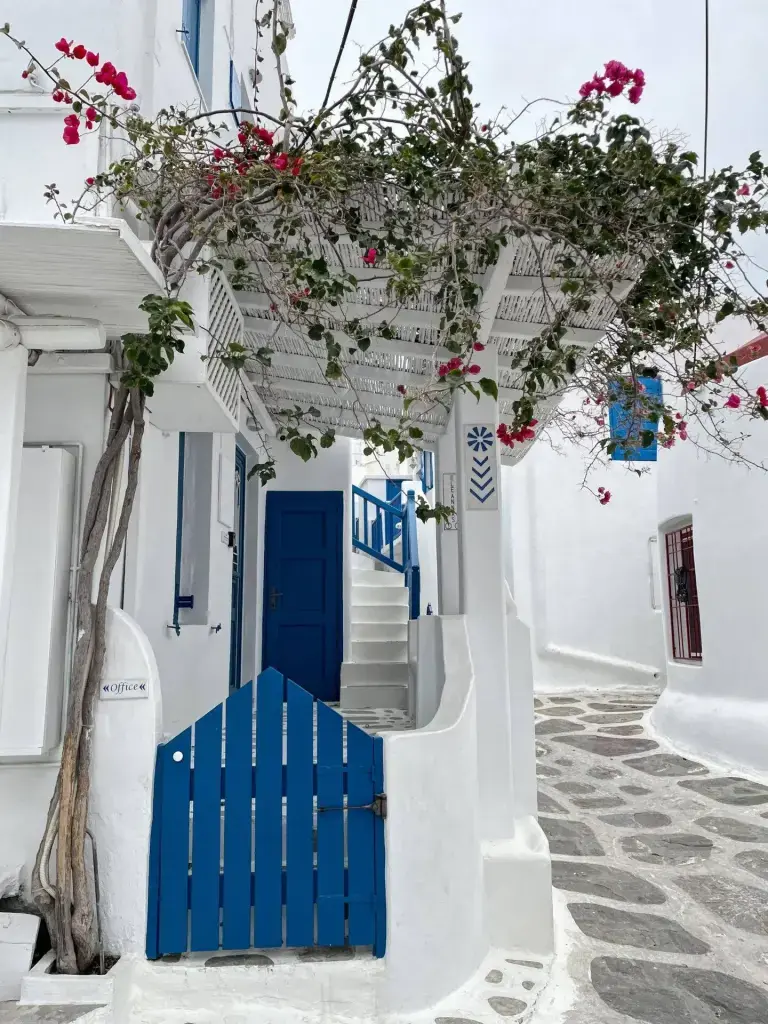
The Temple of Hephaestus, in the heart of Athens’ Agora, is one of the best-preserved Greek temples. In fact, if you look up, you can see the Acropolis towering over it.
Designed in the Doric style, it honors the god of the forge. History buffs will delight in its colonnades and detailed sculptures.
Unlike many other temples, the Temple of Hephaestus has remained almost intact, having been used as a church during the Byzantine period!
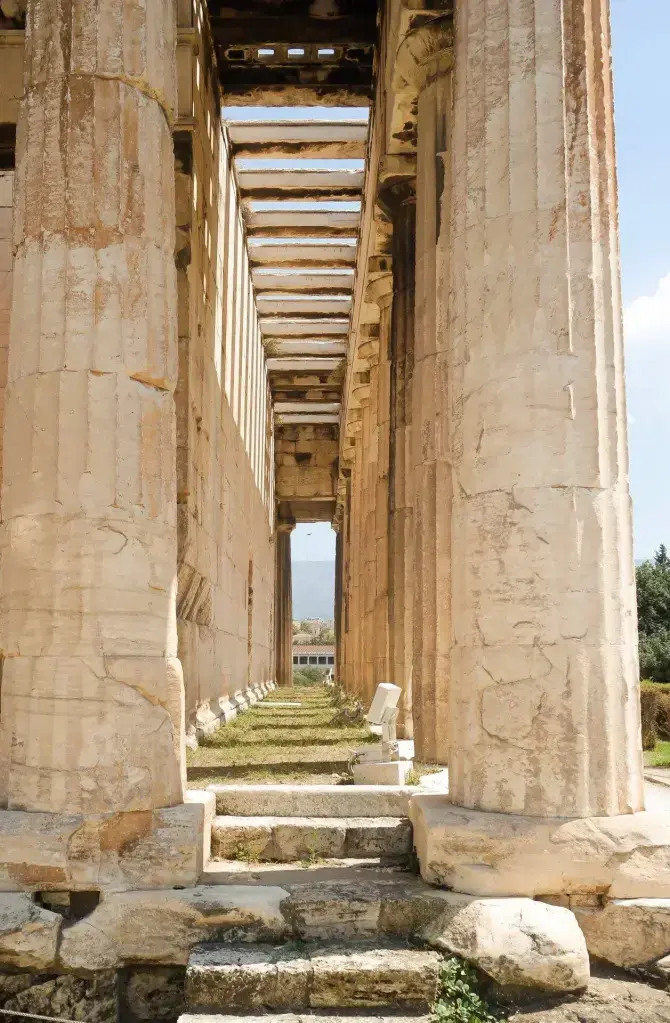
Do you have any questions?
Our teams are here to advise you!

4,3/5 on Trustpilot

Certified partners

Human & committed service

Customized offer

Optimal coverage